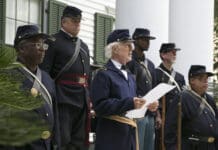Originally posted February 13, 2023
Updated February 1, 2024


February 1, 1950
Guitarist Mike Campbell born today
Mike Campbell, the lead guitarist with “Tom Petty & the Heartbreakers”, was born on February 1st, 1950 in Panama City, Florida. Campbell grew up in Panama City and Jacksonville and started playing the guitar as a teenager. In the 1970s, Campbell met Tom Petty in Gainesville and joined Petty’s band “Mudcrunch.” After a few years of popularity in Florida, the group broke up. In 1976, Petty and Campbell teamed up again with several others for “Tom Petty & the Heartbreakers.” Not only was Campbell the lead guitarist for the Heartbreakers, he also was a co-producer for several of the group’s albums. The group was inducted into the Rock and Roll Hall of Fame in 2002. Campbell played with Tom Petty & the Heartbreakers until Petty died in 2017. Since then, Campbell has played with “Fleetwood Mac” and started his own band, “The Dirty Knobs.”
February 7, 2012
Civil rights leader Patricia Due dies
On this day in 2012, Civil Rights leader Patricia Stephens Due died in Smyrna, Georgia after a battle with Thyroid cancer.
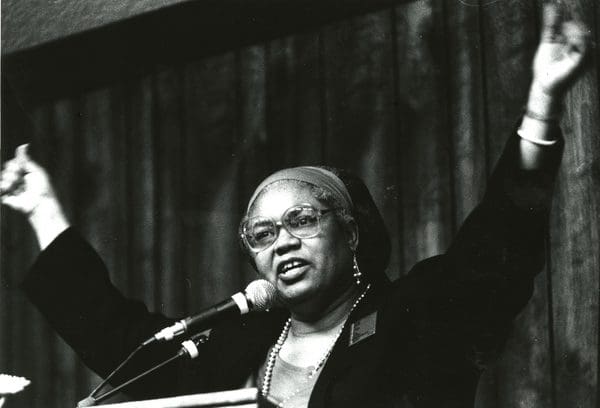

Born in Quincy, Florida, Due and her sister, Priscilla Stephens, were leaders of many protest movements in Tallahassee during the 1960s. As college students at Florida A & M University, the duo, along with several others, were jailed following sit-ins at the “Whites Only” lunch counters at Woolworth and McCrory drug stores in 1960.
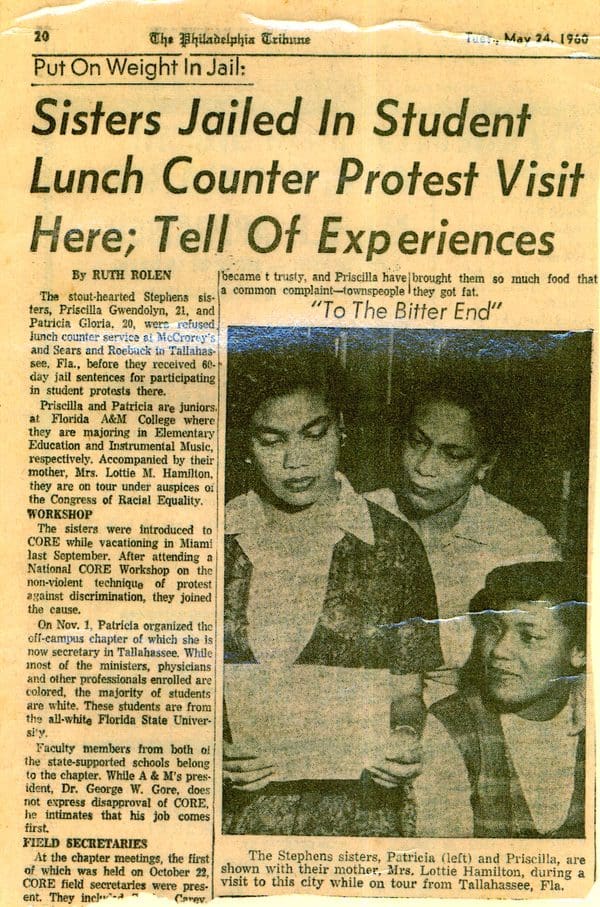

After one of the arrests, Due and seven others refused to pay the $300 fine. The result was the nation’s first “jail-in.” Instead of paying the fee, Due, her sister, high school student Henry Steele (son of Tallahassee Civil Rights leader C.K. Steele), John and Barbara Broxton, William Larkins, Angela Nance, and Clement Carney were sentenced to 60 days in jail. This jail-in inspired people around the country. Due was also part of the integration efforts and demonstrations at the State Movie theatre in Tallahassee in 1963 as well as many other civil rights efforts around the state and country. Patricia married Civil Rights attorney John Due in 1963. She and one of her three daughters, Tananarive Due, wrote Freedom in the Family: a Mother-Daughter Memoir of the Fight for Civil Rights.
Discover more about the civil rights movement in Tallahassee in episode 6 of the WFSU Florida Footprints documentary series. It’s called “The Paths of Progress.”
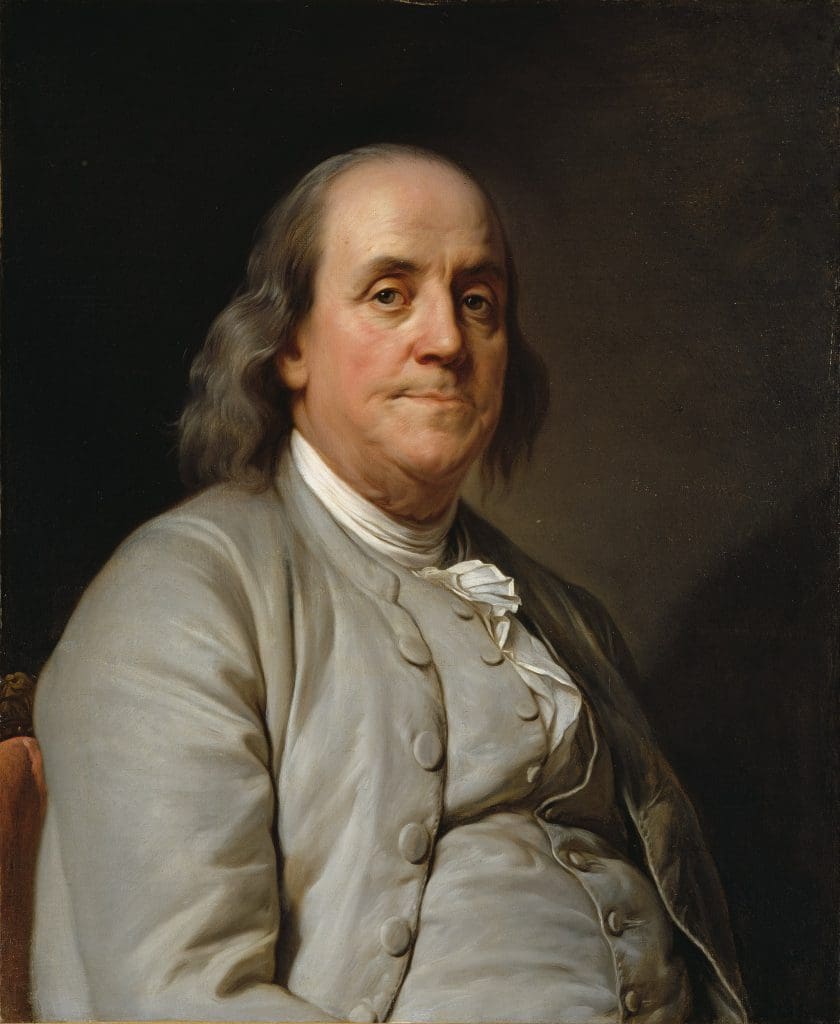

There is also additional information on the Visit Tallahassee website about the jail-in.
February 8, 1832
Happy Birthday, Franklin County!
On this day in 1832, the Legislative Council of the Territory of Florida established Franklin County, carving it out of the counties of Gadsden and Washington Counties. It is home to the towns of Apalachicola, the third largest Cotton port before the start of the civil war, and Carrabelle, the location of Camp Gordon Johnston during World War II. The county was named after Benjamin Franklin who was a printer, inventor, and statesman and is considered one of the Founding Fathers of the United States. He died in 1790. WFSU members can learn more about Ben Franklin on the WFSU PBS Passport app.
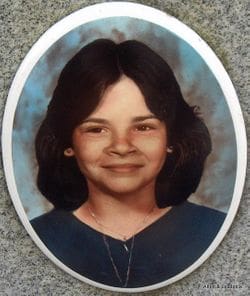

February 9, 1978
Bundy’s last victim is kidnapped
On this day in 1978, Serial Murderer Theodore “Ted” Bundy kidnapped 12-year-old Kimberly Dianne Leach near her middle school in Lake City, Florida. At the time, Bundy was living in Tallahassee just a few blocks away from his most recent murder. In January of that year, Bundy had murdered two women at a sorority on FSU’s campus and severely injured three others. Police were still looking for a suspect.
On February 8th, Bundy had stolen an FSU van and driven to Jacksonville. Police say he tried to kidnap a teenager there, but the attempt failed. Investigators say he headed back toward Tallahassee, stopping in Lake City for the night. The next morning, Leach went to school and attended her first class of the day but never showed up for the second. Police think Bundy grabbed her between the buildings on campus. A witness told police that they saw a man matching Bundy’s description pulling Leach by the arm in the school parking lot, but had assumed it was her father and the girl had gotten in trouble a school.
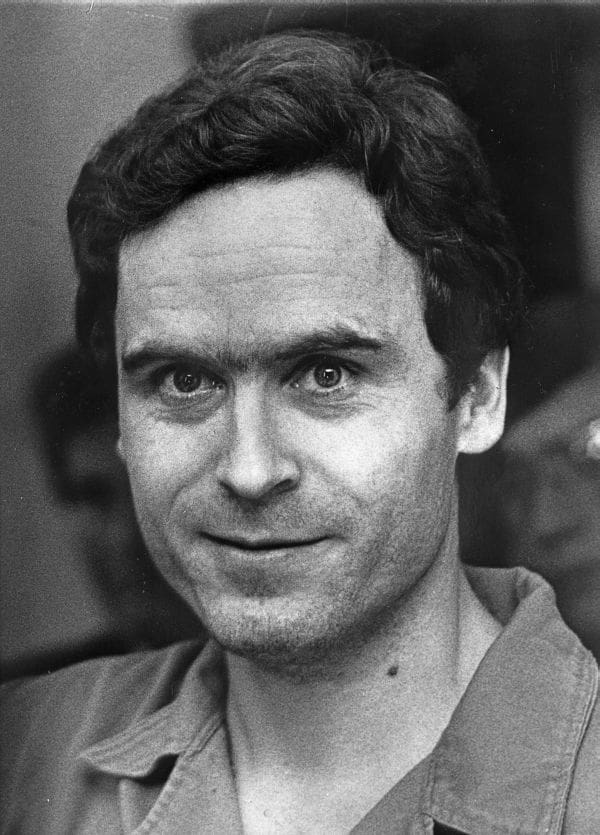

Bundy tried to permanently leave Tallahassee a few days after Leach’s Murder, but he was arrested driving another stolen car near the Florida/Alabama state line. A stolen credit card used at a hotel in Lake City the night before Leach disappeared was found in his possession. Already wanted for escaping a Colorado jail, Bundy was arrested and later charged for the murders in Tallahassee and questioned in the disappearance of Leach.
Leach’s decomposing body was found in April under a collapsed shed near Suwannee River State Park. She had been raped, mutilated, and her throat was cut. Bundy charged in her death and his trial took place in 1980. Bundy was convicted of her kidnapping and murder and executed for the crime on January 24, 1989.
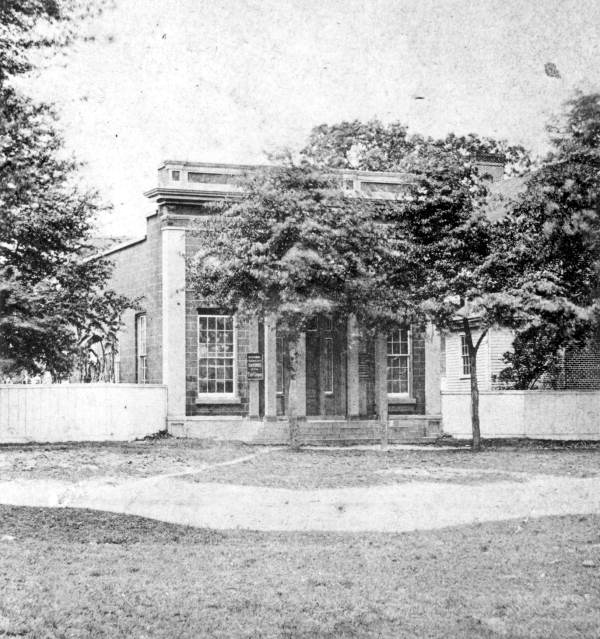

February 13, 1833
The Union Bank is created
Florida’s Territorial Council created the Union Bank on this day in 1833. While on paper that bank was new, the building itself had already been around for three years and had already seen two banks come and go within it’s walls. Benjamin Chaires had constructed the building around 1830 for a man named William “Money” Williams at the corner of Adams and College Streets. Williams opened the Bank of Florida in that location. He also had the private home called The Columns built next door. Within a few years, Williams sold the bank building to Benjamin Chaires, now charter holder of the Central Bank of Florida. The Territorial Council purchased the charters of both the Bank of Florida and the Central Bank of Florida and formerly the Union Bank opened on January 15, 1835. John G. Gamble was president.
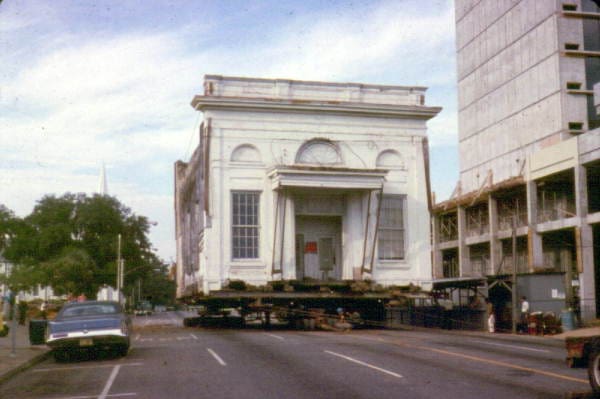

That bank closed in 1843, but the building later served as the National Freeman’s Savings and Trust Company after the Civil War for many years. It served as other businesses over the decades. In 1971, the bank building and the Columns were moved to new locations. The Union Bank building currently sits at the southwest corner of Apalachee and Monroe.
February 13, 1932
The State Theatre opens in Tallahassee
On this day in 1932, the first version of the movie theatre known as the “State Theatre” opened on East College Avenue in Tallahassee, Florida. Previously it had been called the Daffin Theatre.
The first movie at the State Theatre that February was Carol Lombard’s film “No One Man.” Within a year, on December 5, 1932, a fire destroyed the building. A larger version was built on the same site. The website Cinema Treasures says it was “designed in Art Deco style, including a stylish marquee that reached across the entire front of the building, five sculpted panels on the façade, and a two-story tall vertical sign.”
During the 1960s the segregated policies of the State Theatre made it the site of several civil rights protests. The theatre later closed in 1972 (or 1), but the building remained until it was torn down in 1988.
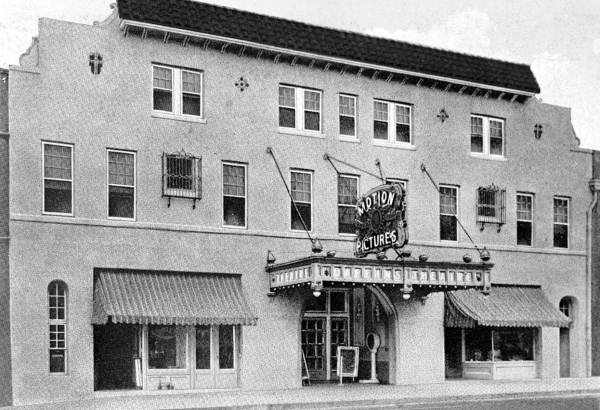

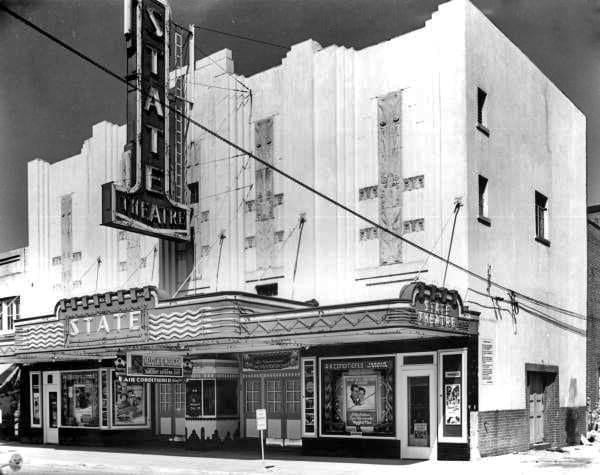

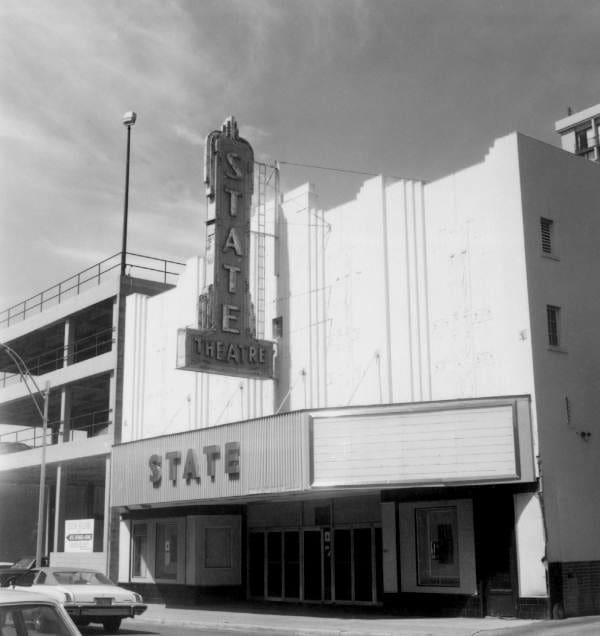

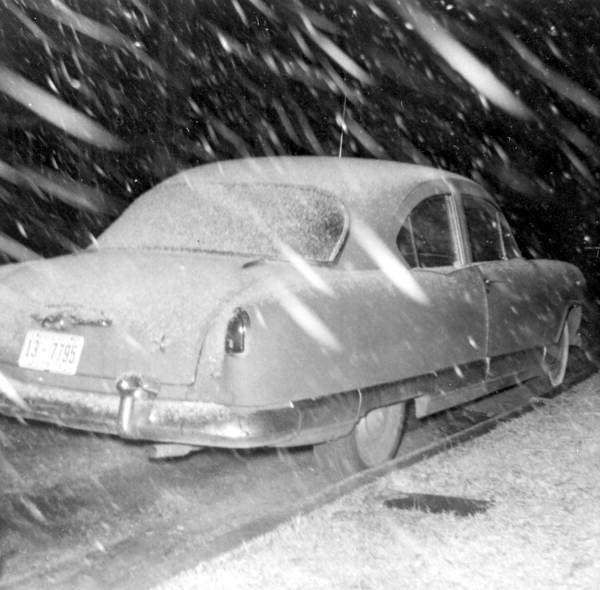

February 13, 1899 AND 1958
Record breaking weather in Tallahassee
On this day, in two different years (and two different centuries), Tallahassee had two record-breaking weather events. In 1899, the lowest temperature ever was experienced in Tallahassee (as well as all of Florida). The temperature in the city was recorded as -2 degrees Fahrenheit.
Also on this day, in 1958 the largest amount of snow ever measured in Tallahassee was recorded, reaching a total of 2.8 inches. Although technically, most of that snow fell on February 12th, the 13th is marked as the record-breaking day. Check out more about this history of weird February 13th weather in the Florida Panhandle at the Weather.gov website.
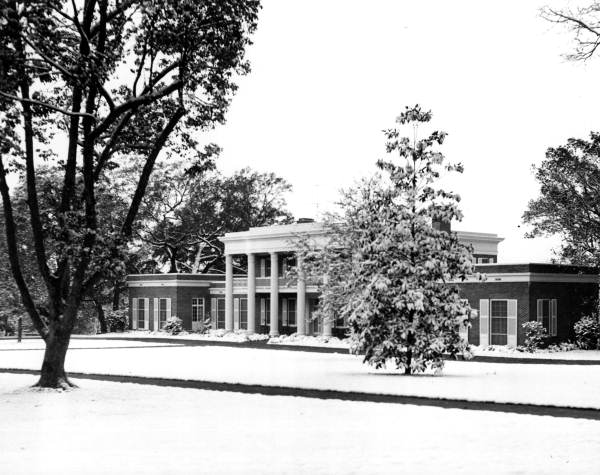

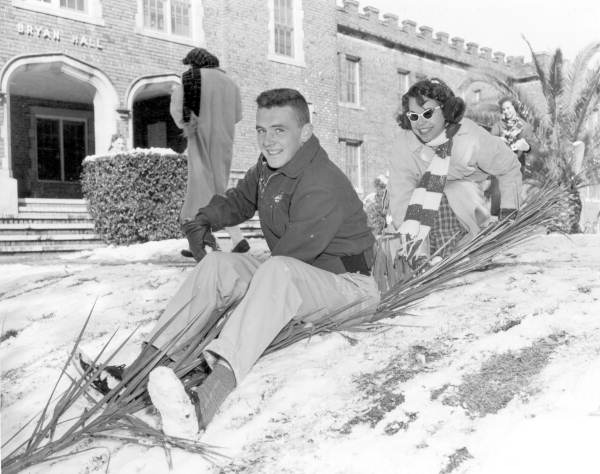

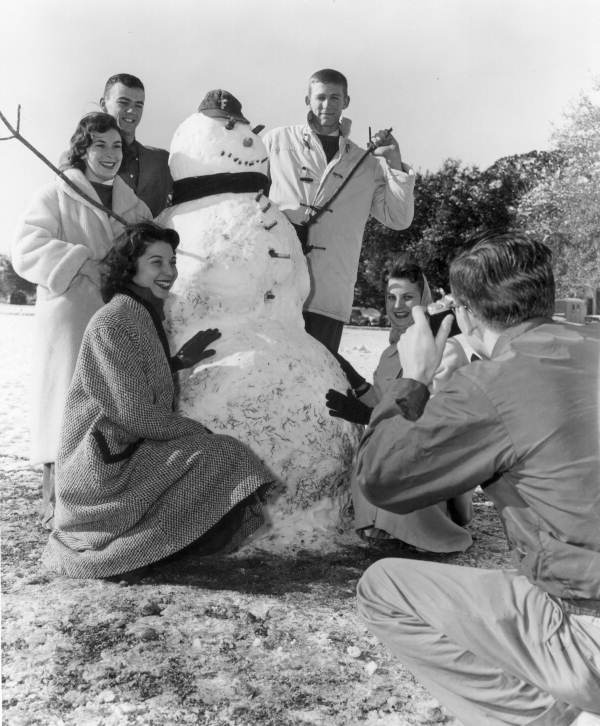

February 13, 1960
The first sit-ins in Tallahassee begin
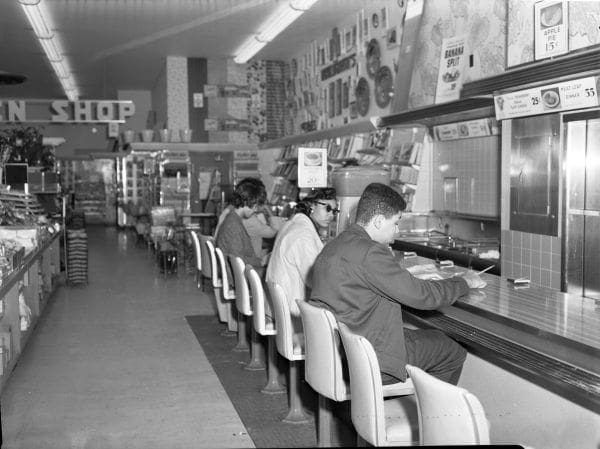

On this day in 1960, the Tallahassee chapter of the Congress of Racial Equality (CORE) held the first sit-ins at the Woolworth’s lunch counter on Monroe Street in Tallahassee, Florida. Made up of 6 Florida A&M students and 2 high school students, they were inspired to act on this day by the civil rights first sit-ins earlier that month in Greensboro, North Carolina. The first one in Tallahassee ended after a few hours and there were no arrests. According to Glenda Alice Rabby’s book “The Pain and the Promise,” the police did not arrive until after the protestors left. A week later, at a second planned sit-in on February 20th, there were 11 arrests which resulted in the first “jail-in” in the country.
Discover more about the civil rights movement in Tallahassee in episode 6 of the WFSU Florida Footprints documentary series. It’s called “The Paths of Progress.”
There is also additional information on the Visit Tallahassee website about the jail-in.
February 17, 1908
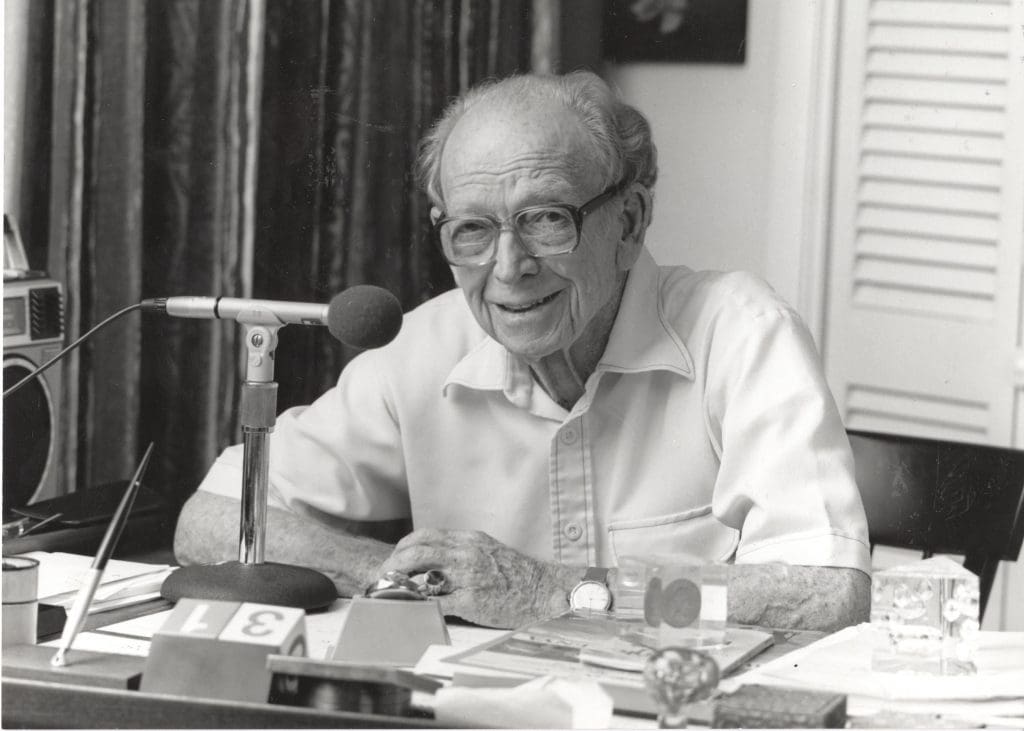

Sportscaster Red Barber is born
Walter Lanier “Red” Barber is born in Columbus, Mississippi. Barber grew up in Sanford, Florida, and was a major play-by-play sports announcer for radio and television for more than 40 years. He called games for the Cincinnati Reds, Brooklyn Dodgers, and the New York Yankees. After his retirement, he lived in Tallahassee and was a weekly contributor to National Public Radio’s Morning Edition through WFSU Public Media’s radio station. After Barbrer’s death in 1992, WFSU’s adopted the legend’s name for their new address.
February 17, 1914
Civil rights leader C.K. Steele is born
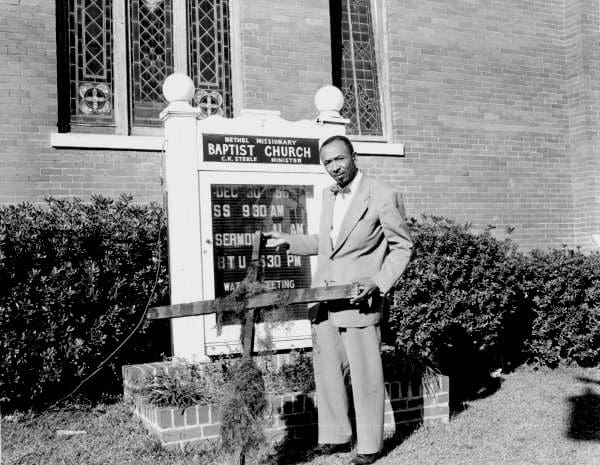

On this day in 1914, Civil Rights leader Reverend Charles Kenzie (C.K.) Steele was born in McDowell County, West Virginia. He graduated from Morehouse college and became a Baptist Minister. After serving as a minister in Northeast Georgia, Montgomery, Alabama, and Augusta, Georgia, C.K. Steele became pastor of Tallahassee’s Bethel Baptist Church in 1952.
In May 1956, he was elected president of the Inter-Civic Council (ICC). The ICC was created to organize the bus boycott started by students at Florida A&M University. They held mass meetings, organized carpools, and demanded full integration of the Tallahassee bus system. The Tallahassee Bus Boycott ended in December 1956, but opposition to the integration of the bus system continued by commissioners and the community.
The work to integrate the bus system continued and it finally happened two years later. In addition to leading many other civil rights protests during his time in Tallahassee, Steele also served as head of the local NAACP chapter and was the first Vice President of the Southern Christian Leadership Conference (SCLC) in 1957 where Dr. Martin Luther was President. As a tribute to his work, the city named the new bus terminal after Steele in 1983. In 2018, the state designated part of Orange Avenue in Tallahassee the “C.K. Steele Memorial Highway.”
Discover more about the civil rights moment in Tallahassee in the Learn more about the Civil Rights and the impact on Florida in episode 6 of the WFSU Florida Footprints documentary series. It’s called “The Paths of Progress.”
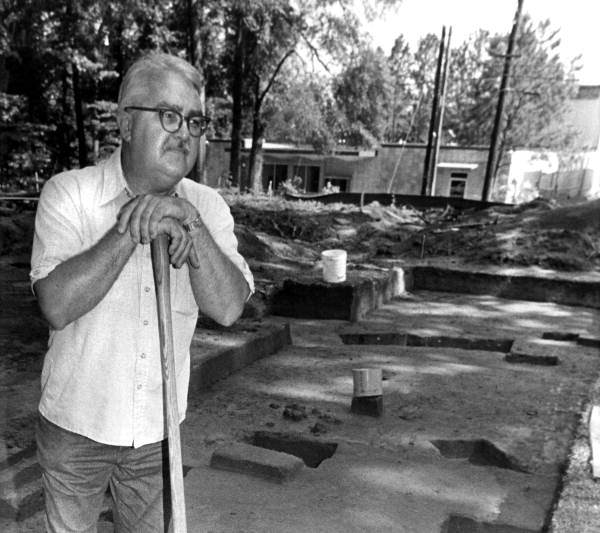

February 17, 1998
Archeologist Calvin Jones passes away
On this day, state archeologist Calvin Jones passed away at his home in Wakulla county. He was 59. For nearly 30 years, Jones worked with the Florida Bureau of Archeological Research. His most well-known achievement occurred in 1987 when he discovered the 1539-40 winter encampment of Spanish explorer Hernando DeSoto. The DeSoto Historic State Park today is located near Apalachee Road in the Myers Park area. It can be accessed off Lafayette Street. A museum containing some of the artifacts found during the excavation is housed in the historic home of John W. Martin, who served as Governor of Florida from 1925 to 1929.
The work Jones did to uncover the site is explored in episode one of the WFSU Florida Footprint series. The episode is called Once Upon Anhaica.
February 19, 1968
Florida’s teachers strike!
On this day in 1968, the first statewide teachers’ strike in the United States began in Florida. Over 27,000 teachers and administrators turned in their resignations and walked off the job. At the time, the Leon Education Association reported that 286 out of 784 Leon County teachers didn’t show up to work on the first day of the strike. The Tallahassee Democrat reported that more than 400 people had offered to volunteer to help teach Leon County classes at the start of the walkout. As members of the Florida Education Association (FEA), strikers wanted more money for schools and salaries which were behind the national average.
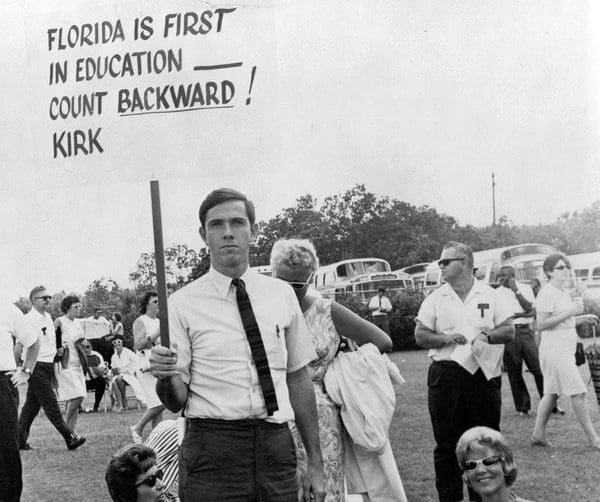

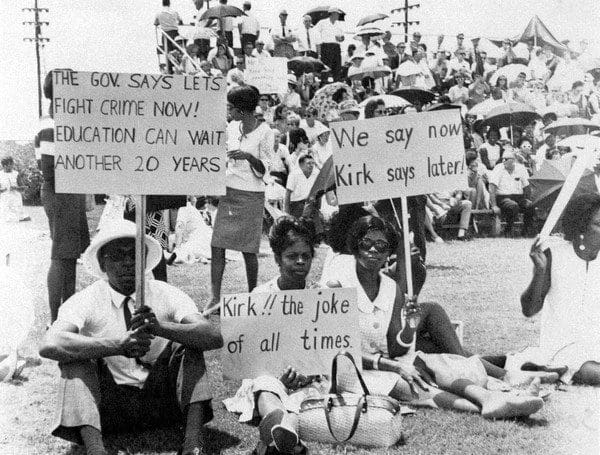

Time Magazine on March 1, 1968 wrote that the issue began when Governor Claude Kirk campaigned in 1966 to “hold state taxes steady and at the same time make Florida ‘first in the nation in education.” He followed up on this promise in 1967 by vetoing the $130 million that the state legislature had allocated for schools in the state.
There were protests and smaller strikes throughout the fall leading up to a special session on the issue. The final straw came when the governor refused to approve any bills increasing the funding for education and did not extend the legislative session to work out a deal. Because state law prevented teachers from striking, they had to submit their resignations before walking out.
On March 8, 1968, the State Board of Education held an emergency meeting to approve a settlement with the FEA that gave $10.2 million for public education. While most of the teachers were back to work by the end of March, several school districts refused to rehire teachers involved in the strike. Thousands were left without jobs.
February 20, 1864
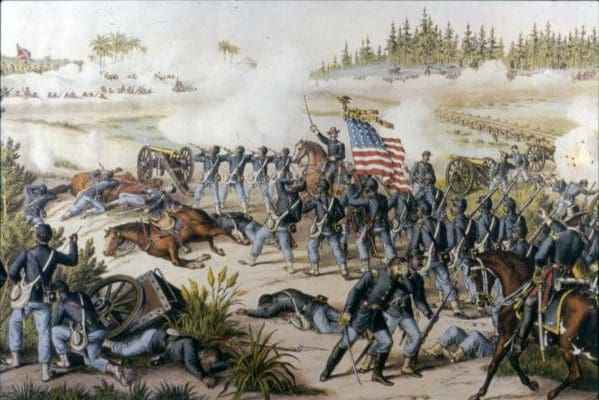

The Battle of Olustee
On this day, the largest Civil War battle in Florida took place east of Lake City, Florida. The North called it the Battle of Olustee and the South called it the Battle of Ocean Pond. It started after approximately 5,000 Union troops advanced from their Jacksonville stronghold toward Florida’s capital of Tallahassee under the command of Brigadier General Truman Seymour. They met approximately 5,500 confederate soldiers led by Brigadier General Joseph Finegan and battled for two days. In the end, 1,861 Union and 946 Confederate soldiers were either killed, wounded, or missing in the battle. Union troops retreated to Jacksonville.
Many of the wounded from the Confederacy and some of the Union soldiers, were sent by train to Tallahassee for treatment. The Meginnis-Munroe House, which now houses the visual arts gallery of LeMoyne Arts in Tallahassee, served as a hospital in the aftermath of the battle. Each year there is a multiday reenactment of the battle as well as educational activities held at the Olustee Battlefield Historic State Park off of U.S. 90 in the Osceola National Forest. You can find out more about this annual event here. Learn more about the Civil War and its impact on Florida in episode 3 of the WFSU Florida Footprints documentary series. It’s called “The Confederate Road.”
February 20, 1960
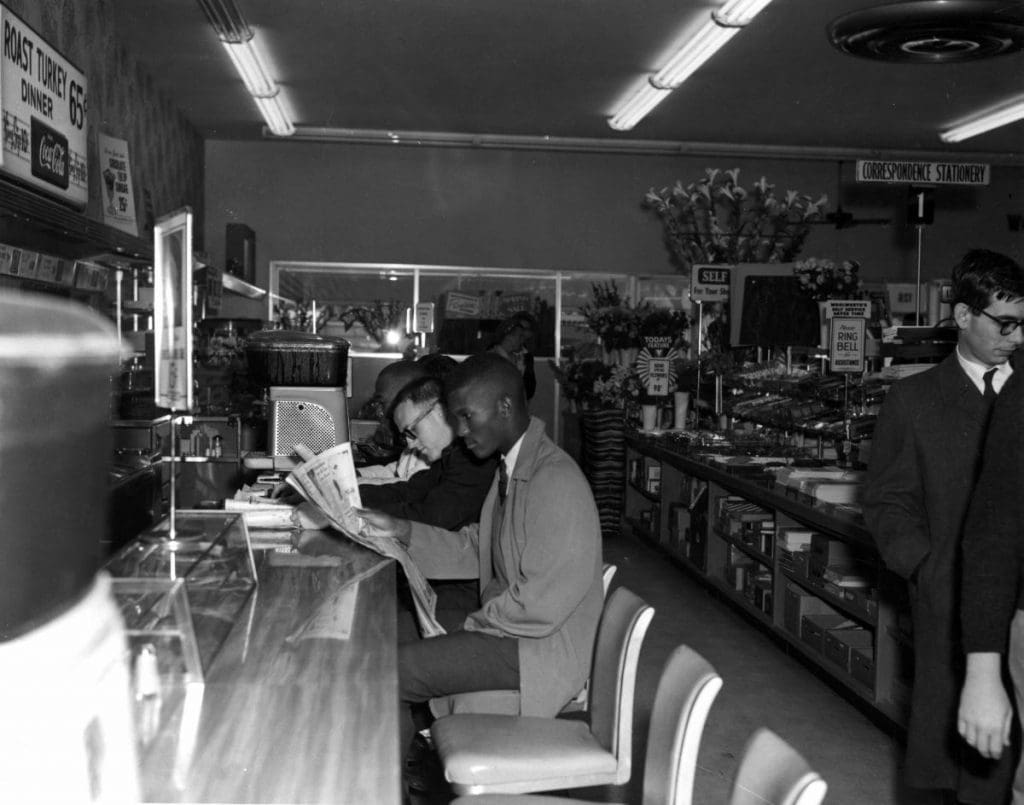

Second sit-in, first arrests
On this day in 1960, the Tallahassee chapter of the Congress of Racial Equality (CORE) held their second sit-in at the Woolworth’s lunch counter on Monroe Street in Tallahassee, Florida. While the first sit-in a week earlier had ended with no arrests, this time the Tallahassee mayor and several city commissioners arrived with the police about 45 minutes into the quiet protest. While some protestors left, officers arrested the remaining eleven.
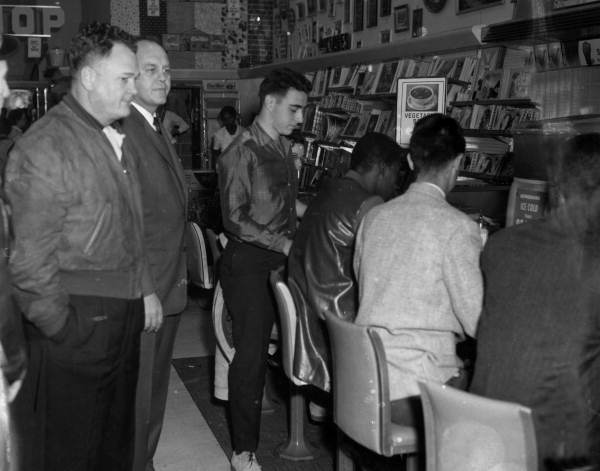

Despite the arrests, more sit-ins occurred in Tallahassee. At the March trial, all eleven were found guilty and sentenced to a $300 fine or 60 days in jail. Three paid the fine, but eight refused to pay. The result was the nation’s first “jail-in.” Instead of paying the fee, sisters Patricia and Pricilla Stephens, high school student Henry Steele (son of Tallahassee Civil Rights leader C.K. Steele), siblings John and Barbara Broxton, FAMU Student Government Association President-elect William Larkins, Angelina Nance, and Clement Carney headed to jail to begin serving their sentence on March 18, 1960. The group inspired more civil rights protests around the country.
Discover more about the civil rights movement in Tallahassee in episode 6 of the WFSU Florida Footprints documentary series. It’s called “The Paths of Progress.”
There is also additional information on the Visit Tallahassee website about the jail-in.
February 22, 1954
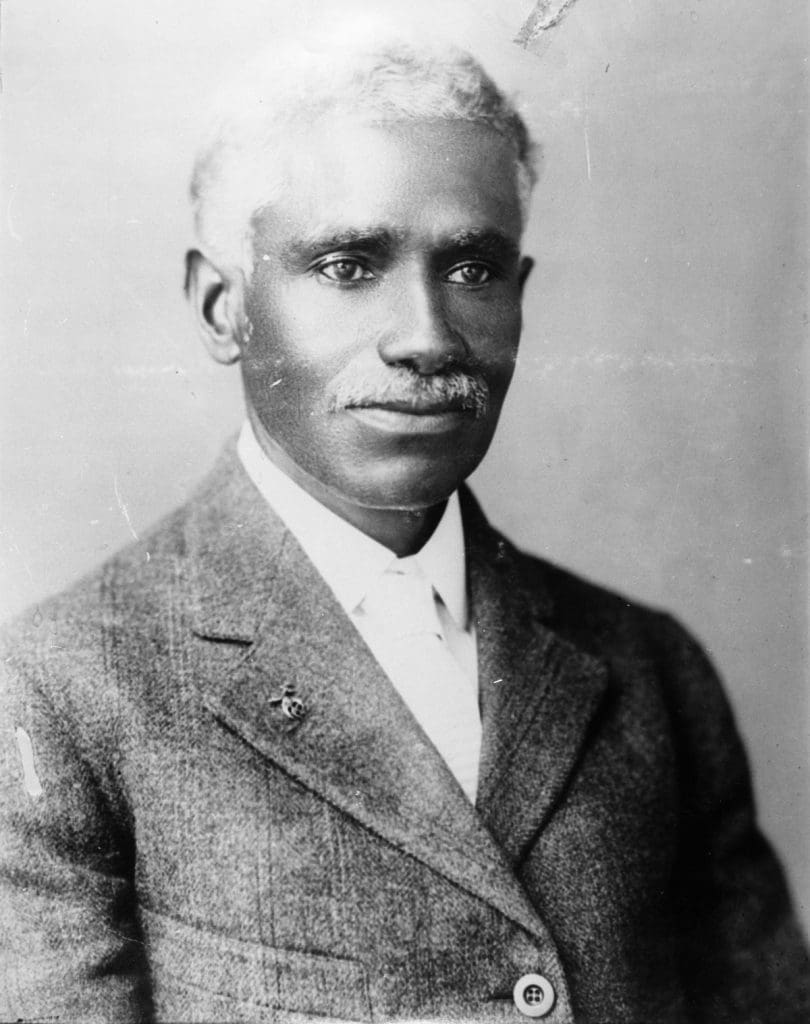

John G. Riley passes away
On this day in 1954, John G. Riley passed away at the age of 97 at Florida A&M Hospital in Tallahassee after a long illness. Born into slavery on September 24, 1857 in Tallahassee, Florida, Riley learned to read and write from relatives. He grew up to become a teacher. In 1881 Riley became an instructor at Lincoln Academy in Tallahassee. Riley later became the principal of the school in 1892 and held the position until he retired in 1926.
Also a businessman, Riley owned a variety of rental properties in Tallahassee. He built his home on the edge of the Smokey Hollow community in 1890. While most of the buildings in Smokey Hollow were destroyed through eminent domain in later decades, Riley’s home was eventually restored and on August 1st, 1978, it was added to the U.S. National Register of Historic Places. It is now home to the John G. Riley Center and Museum. You can learn more about John G. Riley and his impact on Tallahassee through the museum’s website.
Also, check out this article by the Florida Historical Society. WFSU’s documentary series, Florida Footprints, included this section on Riley and African-American Education following the Civil War.
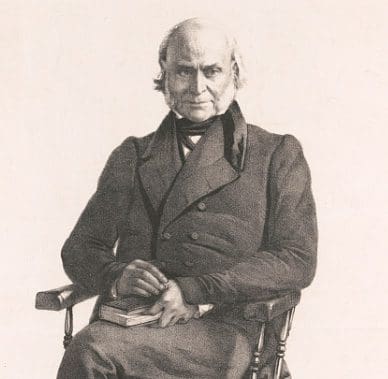

February 22, 1819
Florida becomes part of the United States
On this day in 1819, The Adams-Onis Treaty was signed. Also known as the Transcontinental Treaty, this document transferred land from Spain to the United States and redefined the boundaries between U.S. and Spanish lands. Secretary of State John Quincy Adams, who later became U.S. President, negotiated this treaty with Spain’s Luis de Onis y Gonzalez-Vara. The treaty officially turned over West Florida and East Florida to the U.S. The treaty was ratified in 1820 and the U.S. took possession on March 3, 1821. The land was organized to become the Florida Territory in 1822.
February 23, 1945
Boots Thomas Jr. dies at Iwo Jima
Sergeant Ernest Ivy “Boots Thomas Jr., who grew up in Monticello, Florida, was one of the men who helped raise the first American Flag at the top of Mount Suribachi during the battle of Iwo Jima in World War II. The flag was replaced with a second larger flag that same day. The raising of that flag was captured in iconic video and phtotos. Thomas was killed in action 8 days later on March 3rd. In addition to a memorial on Highway 90 near Monticello placed in his memory, the VA clinic at the U.S. Department of Veterans Affairs office in Tallahassee is named after Thomas.
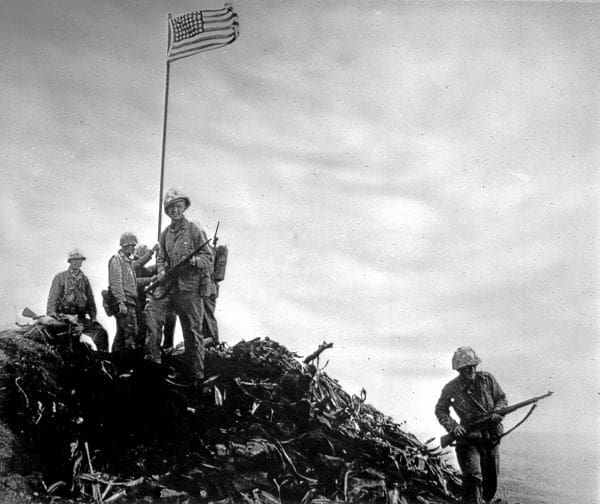

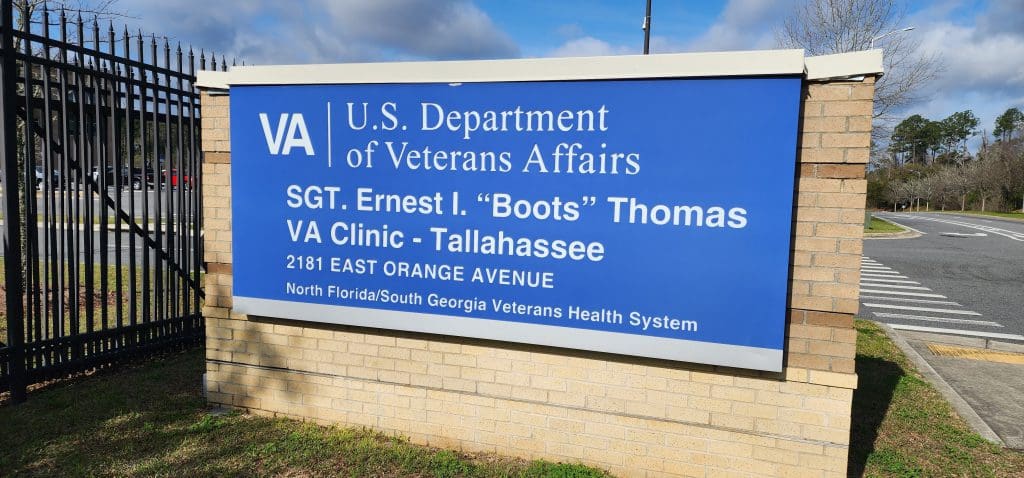

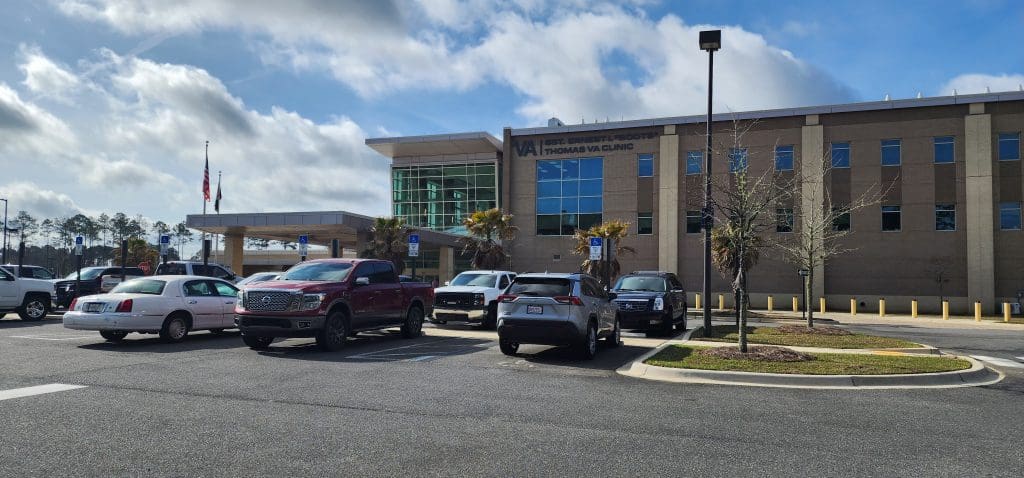

February 25, 1972
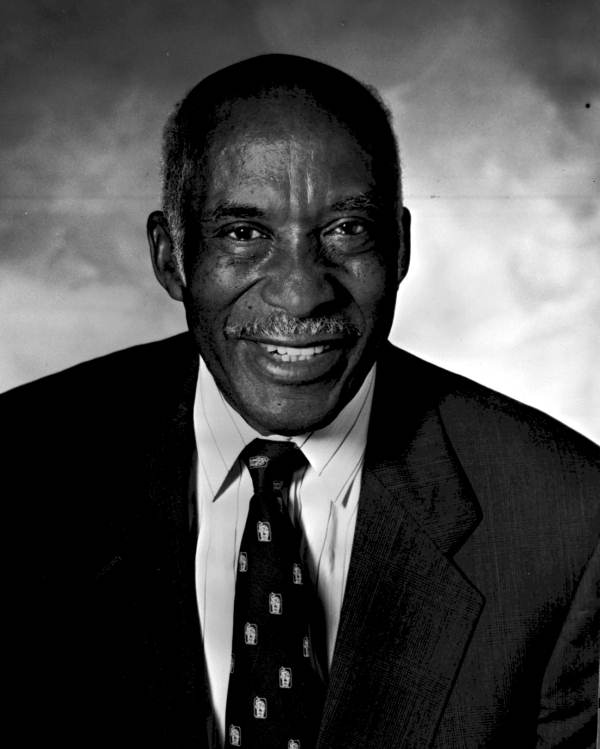

James Ford becomes Tallahassee’s Mayor
Tallahassee city commissioners vote to make fellow commissioner, James Ford, Mayor. Not only was Ford Tallahassee’s first black Mayor, but Ford was also the first black mayor of a capital city in the entire United States. Less than a year before he had become the first black city commissioner in Tallahassee.
February 28, 1971
James Ford becomes Tallahassee Commissioner
James Ford wins the election to become the first black City commissioner in Tallahassee. The 45-year-old was Assistant Principal at Leon High School at the time. One year later Ford was chosen by the other commissioners to become the first black mayor in Tallahassee. That vote also made him the first black mayor of a capital city in the entire United States.
February 28, 1986
Dorothy Iman-Johnson elected to City Commission
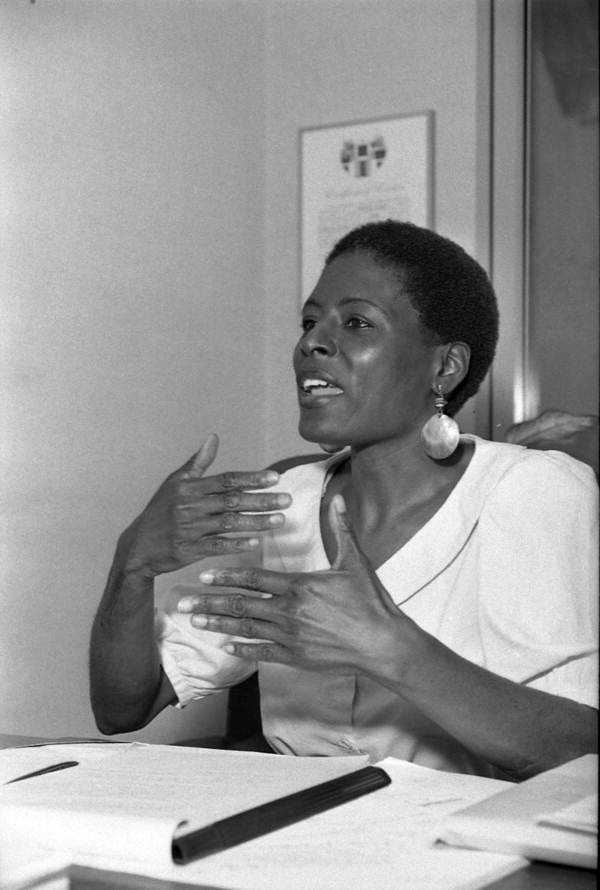

On this day Dorothy Inman-Johnson became the first black woman elected to the Tallahassee City Commission. She served two 4-year-terms representing District 5 and served twice as the city’s mayor. Inman-Johnson took on the Mayor’s one-year term first on March 3, 1989 and again February 26,1993 In 2022, Inman-Johnson published a book called “Tallahassee’s Black History Firsts: Post Reconstruction Era.”
History is a work in progress, just like this page…
These are just some of the interesting facts about the history of our community. More facts about locations, events, and people will be added to these memories as time goes on. The WFSU Local Routes team will continue to research, write, and add other historic moments to this month and others as time goes on. Follow us on Facebook and Instagram for more new-to-you facts about the history of Tallahassee as well as our other north Florida and south Georgia communities. You can also share local historic moments you’d like to see included in our list. Email localroutes@wfsu.org.
Suzanne Smith is Executive Producer for Television at WFSU Public Media. She oversees the production of local programs at WFSU, is host of WFSU Local Routes, and a regular content contributor.
Suzanne’s love for PBS began early with programs like Sesame Street and Mister Rogers’ Neighborhood and continues to this day. She earned a Bachelor of Journalism degree from the University of Missouri with minors in political science and history. She also received a Master of Arts in Mass Communication from the University of Florida.
Suzanne spent many years working in commercial news as Producer and Executive Producer in cities throughout the country before coming to WFSU in 2003. She is a past chair of the National Educational Telecommunications Association’s Content Peer Learning Community and a member of Public Media Women in Leadership organization.
In her free time, Suzanne enjoys spending time with family, reading, watching television, and exploring our community.


